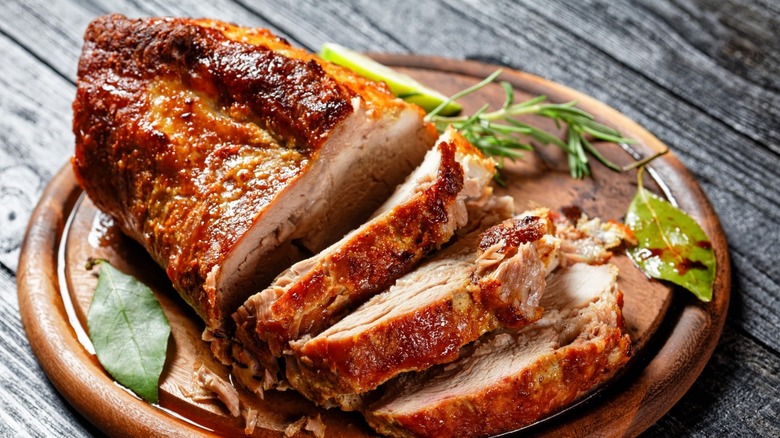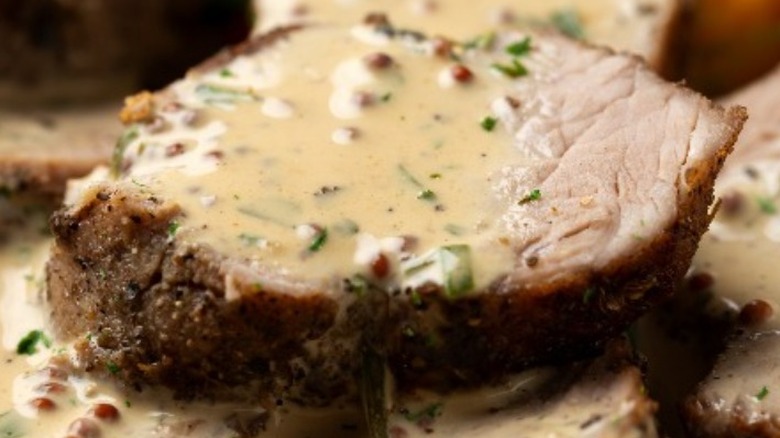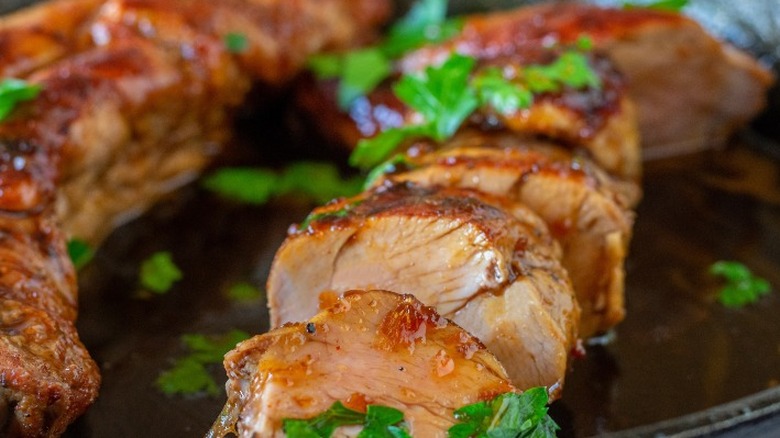The Absolute Best Ways To Reheat Pork Tenderloin
Pork tenderloin is a solid and easy go-to dinner option that even novice cooks can tackle on busy weeknights. Even better, pork tenderloin is an ideal meal prep protein, easily turning leftovers into some amazing second-chance meals. Night one's mustard glazed pork tenderloin comes together in just 30 minutes, transforming into the next day's bacon onion jam pork sliders. Slice it up to fill a sandwich or dice it to toss into some fried rice; the possibilities are endless.
As easy as pork tenderloin is to prepare, it's even easier to dry out — especially on its second or third time being reheated. The many reheating methods may seem obvious, but one small technique is likely to keep tenderloin succulent, moist, and juicy. Reheating with a skillet, oven, air fryer, or microwave may be simple enough, but to avoid chewy, rubbery, and dry leftovers, follow these tips and remember moisture is key.
Microwave with broth and wet paper towel
This method is great because the beauty of leftovers is to have them fast. Nuking any protein could be disastrous, leaving you with something quite inedible, but if you use a little care and follow this technique, your leftover pork tenderloin will taste as good as day one.
Slice the pork tenderloin into ¼-inch thick medallions and lay them flat on a microwave-safe plate. Greatist suggests pouring a bit of the leftover cooking juices, chicken stock, or water over the meat to help retain moisture. Pantry and Larder says covering the meat entirely with a wet paper towel will ensure the meat stays moist. Microwave on medium in 20 to 30-second intervals until the pork tenderloin is warmed through.
Alternative to using a wet paper towel, The Cooking Chew recommends using a second plate to cover the slices, but any microwave-safe lid will do.
Skillet in cooking liquid or broth
A favorable method is to reheat pork tenderloin in a skillet with a bit of cooking liquid or broth. Although this method will not retain the pork tenderloins seared exterior, it does ensure the meat stays as tender and juicy as possible. When reheating steak on the stove top, Taste of Home suggests adding the meat to a few tablespoons of simmering water or broth, flipping a few times until warmed through. This same technique can be applied to reheat pork tenderloin. Pantry and Larder recommends slicing the pork tenderloin into ¼-inch thick slices and bringing gravy or cooking liquid to a bare simmer. Once the liquid is simmering, add the slices and cover the pan, flipping the meat occasionally until ready to serve.
Kitchn agrees that the skillet method yields great results for reheating pork tenderloin. They suggest making sure you have a pan with a fitting lid before you get started. A little liquid and a covered skillet will yield great results when reheating pork tenderloin on the stove.


